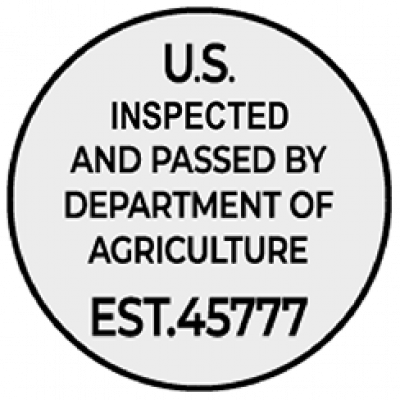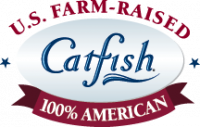At Heartland Catfish Company, we ensure the best care for our fish so we can provide a high-quality product to our customers. We’ve worked hard with our partner farmers to create a healthy environment for our catfish, so our customers know exactly where their fish come from and how they acquire their signature mild and sweet flavor.
From Egg to Hatchery
Catfish begin as eggs, which are produced by the thousands. Eggs are kept in a specialty box that mirrors the natural process of catfish as much as possible. Male catfish typically keep the eggs moving and aerated, which is why we do the same in our boxes. The specialty boxes are typically kept around 80 degrees Fahrenheit, the ideal temperature for catfish eggs to develop. The eggs are then moved to the hatchery.
At the hatchery, the “sac fry,” which are baby fish, live off of the yolk from their egg. At Heartland, we also feed them a high-protein floating feed to begin training the fish to look upwards for food. This step makes a big difference between your typical catfish and U.S. farm-raised catfish.
Pond Life
Once the sac fry are trained, they relocate to ponds that are 10-20 acres in size, but only a few feet deep. This is where they become “fingerlings,” and they grow to be about 5-7 inches long. These freshwater ponds contain thousands of fingerlings: there can be approximately 5,000 to 10,000 fingerlings per surface acre of water.
During their days in the ponds, the catfish are fed a high-protein food mixture made of corn, soy beans, wheat, vitamins and minerals. Once they reach a weight of 1.5 to 2.5 pounds, which takes about 18-24 months, the catfish are ready to be harvested.
Time for Harvesting
Before our farmers harvest each pond of catfish, we make sure the flavor is up to our standards. To do this, we enforce a stringent flavor and quality test. If the pond passes, the catfish are harvested.
Heartland’s partner farmers use seines, which are weighted nets, to gather the fish and move them into aerated tanks on flatbed trucks. This allows us to move the catfish to the processing plant quickly and with the least amount of stress caused to the fish.
All About Processing
Once at the plant, the catfish are put into a large basket that acts as a scale. This ensures we know how many pounds of catfish are being brought in to process. Each catfish is sent down the correct process line. When processed, the fish are cleaned, filleted, trimmed and packed in various forms, sizes and cuts for the customer. Depending on the customer’s order, the catfish are either put on ice or sent through a blast freezer. They are then ready to be shipped to the customer.
Delivered in freezer trucks, our catfish arrive to our customers across the country. Heartland catfish are ready to be prepared by the customer from the moment it is delivered. Whether planning to fry, bake or grill the fish at home or at their restaurant, we’re proud to provide high quality U.S. farm-raised catfish to retail and food service customers year after year.





